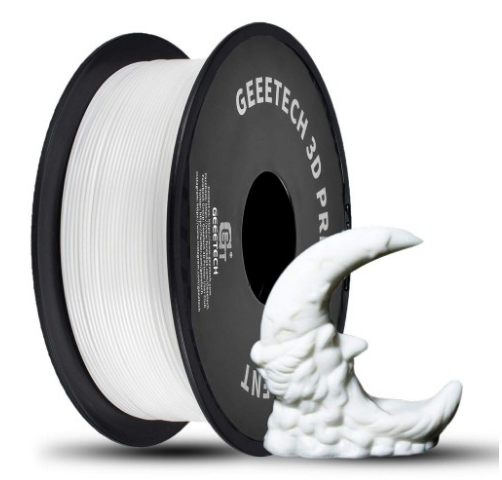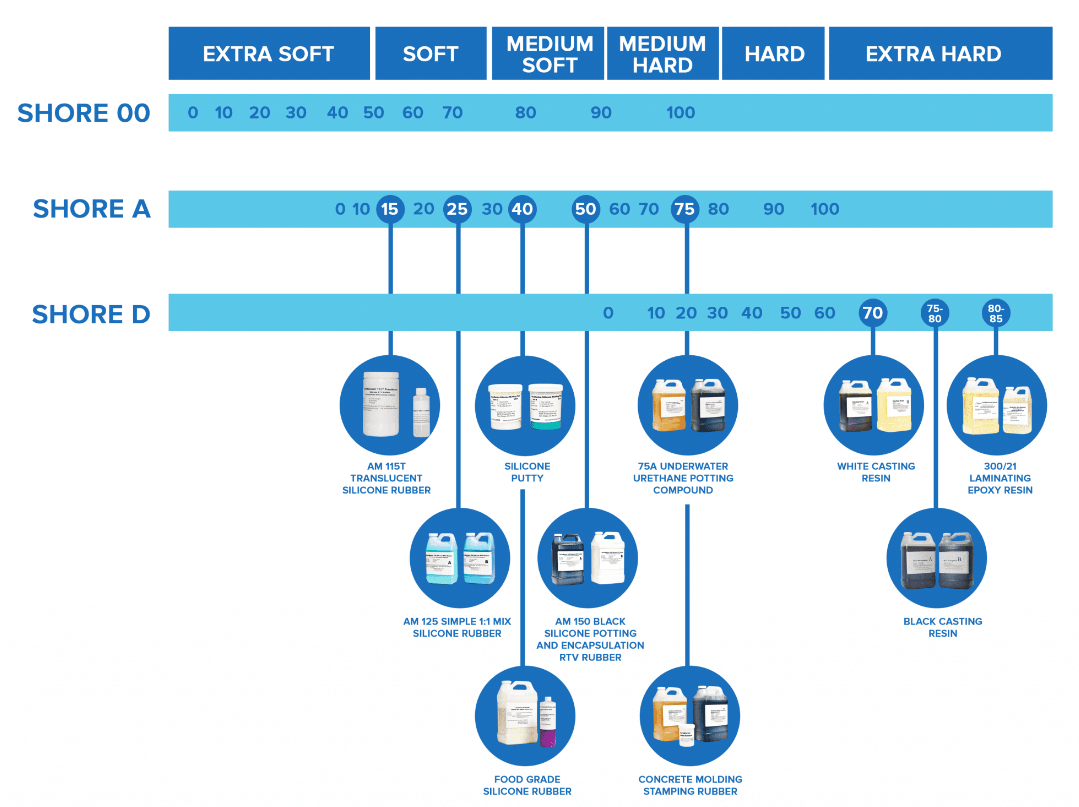Difference between revisions of "Filament"
(→TPU) |
(→TPU) |
||
| Line 67: | Line 67: | ||
TPU stands for “thermoplastic polyurethane”. TPU is a specific type of TPE and is on the more rigid than other flexible filaments, making it easier to print with. The Shore hardness value of Geeetech PLA is 95A. You will need TPU if your print bends, stretches or compresses. | TPU stands for “thermoplastic polyurethane”. TPU is a specific type of TPE and is on the more rigid than other flexible filaments, making it easier to print with. The Shore hardness value of Geeetech PLA is 95A. You will need TPU if your print bends, stretches or compresses. | ||
| − | [[File:Pla6]] | + | [[File:Pla6.png]] |
As for Geeetech TPU, the perfect settings in Cura slicer is shown as below: | As for Geeetech TPU, the perfect settings in Cura slicer is shown as below: | ||
Revision as of 06:11, 6 May 2023
PLA
Polylactic acid, commonly referred to as PLA, is made from natural materials such as corn starch. It’s the most widely-used filament in the 3D printing industry. PLA isn’t a plastic known for its strength compared with PETG or ABS, and it’s brittle and stiff compared with TPU. But it’s easy to print, does not need an enclosure or a direct drive extruder. It’s cheap, widely accessible and it can be printed more quickly than most other filament.
As for Geeetech PLA, the perfect settings in Cura slicer is shown as below: Nozzle temperature: 180-220 °C Bed temperature: 60-70 °C Print speed: 60-100 mm/s Initial layer height: 0.3 mm Initial layer print speed: 20 mm/s Travel Speed: At least 120 mm/s Retraction distance: 6 mm for Bowden setups, 2-3 mm for direct drive setups Retraction speed: 45 mm/s Cooling fan speed:100% Initial layer cooling speed: 0% Build plate adhesion: Skirt or Brim
The PLA temperature tower is available in our website.
Geeetech Filament Storage Vacuum Bag
PETG
Polyethylene terephthalate glycol, most commonly known as PETG, is a widely-used material in 3D printing. It’s a durable, non-toxic, low-shrinkage and sturdy material that’s suitable to use in outdoors. But remember PETG is hygroscopic. Try using a container or resealable bags.
As for Geeetech PETG, the perfect settings in Cura slicer is shown as below: Nozzle temperature: 220-230 °C Bed temperature: 70-80 °C Print speed: 40-50 mm/s Initial layer height: 0.3 mm Initial layer print speed: 20 mm/s Travel Speed: At least 120 mm/s Retraction distance: 6 mm for Bowden setups, 2-3 mm for direct drive setups Retraction speed: 25 mm/s Cooling fan speed:30-40% Initial layer cooling speed: 0% Build plate adhesion: Brim
The PETG Cura profile, PETG temperature tower and fan tower are available in our website
Geeetech Filament Storage Vacuum Bag
ABS
Acrylonitrile butadiene styrene (ABS) is commonly found in household and consumer products. ABS is strong, tough, and durable. It has good resistance to heat and impact. Toxic fumes are released while printing ABS, you’ll need an enclosure or in a properly ventilated room.
As for Geeetech ABS, the perfect settings in Cura slicer is shown as below: Nozzle temperature: 230-250 °C Bed temperature: 80-100 °C Print speed: 40-50 mm/s Initial layer height: 0.3 mm Initial layer print speed: 20 mm/s Travel Speed: At least 120 mm/s Retraction distance: 6 mm for Bowden setups, 2-3 mm for direct drive setups Retraction speed: 25 mm/s Cooling fan speed:0% Initial layer cooling speed: 0% Build plate adhesion: Brim
ABS is a hygroscopic material. High moisture content in the filament leads to poor layer adhesion and brittleness. This results in a 3D printed part that can break away easily. Dry boxes and plastic vacuum bags offer a great way to store your materials.
Geeetech Filament Storage Vacuum Bag
TPU
TPU stands for “thermoplastic polyurethane”. TPU is a specific type of TPE and is on the more rigid than other flexible filaments, making it easier to print with. The Shore hardness value of Geeetech PLA is 95A. You will need TPU if your print bends, stretches or compresses.
As for Geeetech TPU, the perfect settings in Cura slicer is shown as below: Nozzle temperature: 200-210°C Bed temperature: 60 °C Print speed: 30-40 mm/s Initial layer height: 0.3 mm Initial layer print speed: 20 mm/s Travel Speed: At least 120 mm/s Retraction distance: 6 mm for Bowden setups, 2-3 mm for direct drive setups Retraction speed: 25 mm/s Cooling fan speed:100% Initial layer cooling speed: 0% Build plate adhesion: Brim

